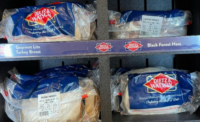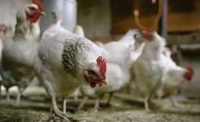Economic trends forecasters don’t have a lot of shiny, happy predictions for the economy in 2023, but there are some positive trends. The International Monetary Fund predicts global growth will slow to 2.7% next year, a slight drop of 0.2 percentage points from its July forecast. While many economic analysts are tiptoeing around using the word “recession,” for millions of financially stretched Americans, 2023 will feel like a recession.
As Dan Emery noted in October in the State of the Industry Report, continued price inflation coupled with low unemployment are likely to continue to put upward pressure on the cost of labor. On the consumer side, shoppers are trading down to value-priced items and store private labels to stretch purchasing power. Whether this trading down will be a permanent change in shopping habits or a temporary cope in an inflationary market remains to be seen.
On the producer side, higher feed prices and continued strong consumer demand have kept wholesale meat prices historically high through 2022, according predictive market analytics firm DecisionNext. Stubbornly high inflation and continuing market instability suggest that the predictability of wholesale meat prices continues to be driven by market-specific fundamentals as opposed to broader macroeconomic trends.
A potential cause for optimism is the foodservice sector, which following a brutal couple of years of disruption during the pandemic-related restrictions and shutdowns is experiencing a gradual return to on-premise dining, according to foodservice market research firm Technomic.
Diners’ gradual return to on-premise eating suggests that the food service industry’s focus on takeout and delivery service while downplaying in-person dining may see some reversal. According to Technomic research, “Years of social distancing and restrictions have created a pent-up demand for an experience beyond a simple meal, while workers’ reappearance to offices, increased travel and lengthier time windows for pickup at busy units are also making placing an order and eating on-site more attractive.” As consumers continue to revert to their pre-pandemic dining routines, finding the right mix of menu offerings and service options will be key for operators that are also continuing to contend with challenging staffing and food price inflation. Despite the trend toward on-premise dining rebounding, Technomic predicts on-premise dining will continue to be less common than it was pre-pandemic.
For quick-service and fast-casual restaurants, rising food costs and related consumer price sensitivity are closing the perceived value gap between the two sectors, Technomic suggests. The convenient off-premise takeaway aspect of fast feeders has become routine for fast casual restaurants’ takeout or delivery options. According to Technomic, “This great blur within limited service will widen these operators’ competitive set and force consumers to prioritize occasions and cravings over value, convenience, and quality when making dining decisions. Watch for limited-service operators to step up efforts to distinguish their brand through refreshed decor, signature menu introductions, enhanced loyalty programs, and seamless service.”

.png?height=96&t=1647275041&width=96)



Report Abusive Comment